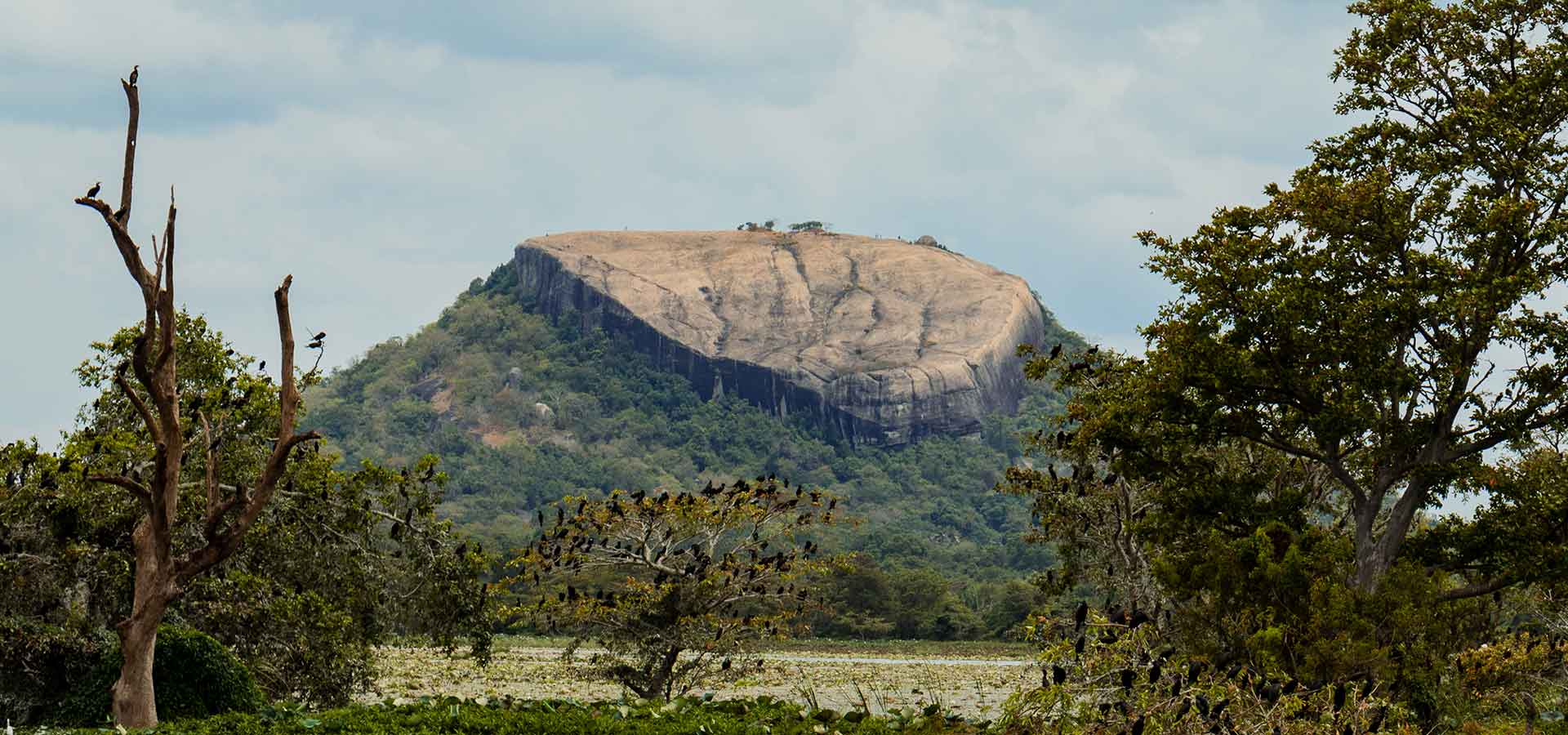The Ancient Rock Monastery
Spewed out of the earth’s burning core, a two-billion-year old rock would go on to become the home of ascetics and pleasure-seeking royals before being celebrated as a masterpiece of human architecture.
Spewed out of the earth’s burning core, a two-billion-year old rock would go on to become the home of ascetics and pleasure-seeking royals before being celebrated as a masterpiece of human architecture.
It is believed that the area around Sigiriya was rife with volcanic activity over two billion years ago, and that the Sigiriya rock was formed from hardened magma plug that was spewed out of the earth’s inner core. The numerous granite boulders scattered around Sigiriya are also believed to be remnants of the lava that once flowed from volcanoes.
Historians believe that the environs around Sigiriya may have been inhabited since prehistoric times. Excavations at the Aligala rock cave (lying to the east of the main rock) have yielded evidence of human occupancy from the Mesolithic period.

Pidirangala Macro Context
Archeologists have found carved rock inscriptions and other evidence that the site functioned as a monastery from as early as the 3rd century BC. The cavities which naturally formed at the base of large boulders on the western and northern slopes surrounding the main rock were turned into habitable shelters by devotees and donated to monks as residences. The Cobra Hood Cave, so named because of its shape, bears an inscription from the 2nd century BC that appears to indicate that it was donated to a monk by a Chief Naguli. The tiered platforms of the Preaching Rock are believed to have been used by orating monks to extol the virtues of Buddhism.
Sigiriya remained a monastery until King Kashyapa I decided to turn it into his capital in the 5th century AD. The monks and ascetics had no choice but to move to another temple built by the king on the neighbouring Pidurangala rock. Kashyapa completely changed the environment of Sigiriya, turning it into an extravagant pleasure palace, a far cry from the harsh and frugal conditions of the monastery. However, Sigiriya was handed back to the Bhuddist monks when Kashyapa’s brother, King Moggallana I, abandoned the site and returned the capital to the city of Anuradhapura. The caves and rock shelters once again became the home of monks and ascetics seeking peace and solitude. King Kashyapa’s excessive redesign of the main rock and gardens may not have boded well with the celibate monks. It is believed that they may have destroyed some of the more sensuous elements of the site, so as not to distract from their meditations.
Sigiriya remained a monastic centre until about the 13th or 14th century AD, after which it disappears from historical records for a while. It reappears in the annals of history around the 16th and 17th centuries, when it was utilized as a distant military outpost during the Kandy Kingdom.